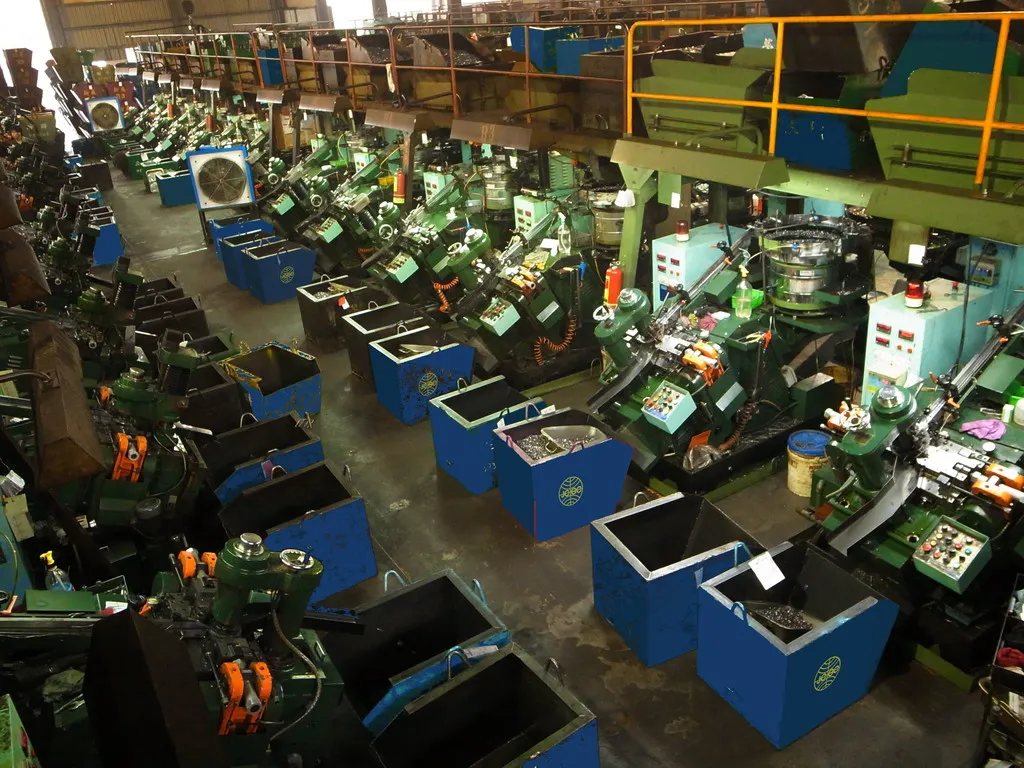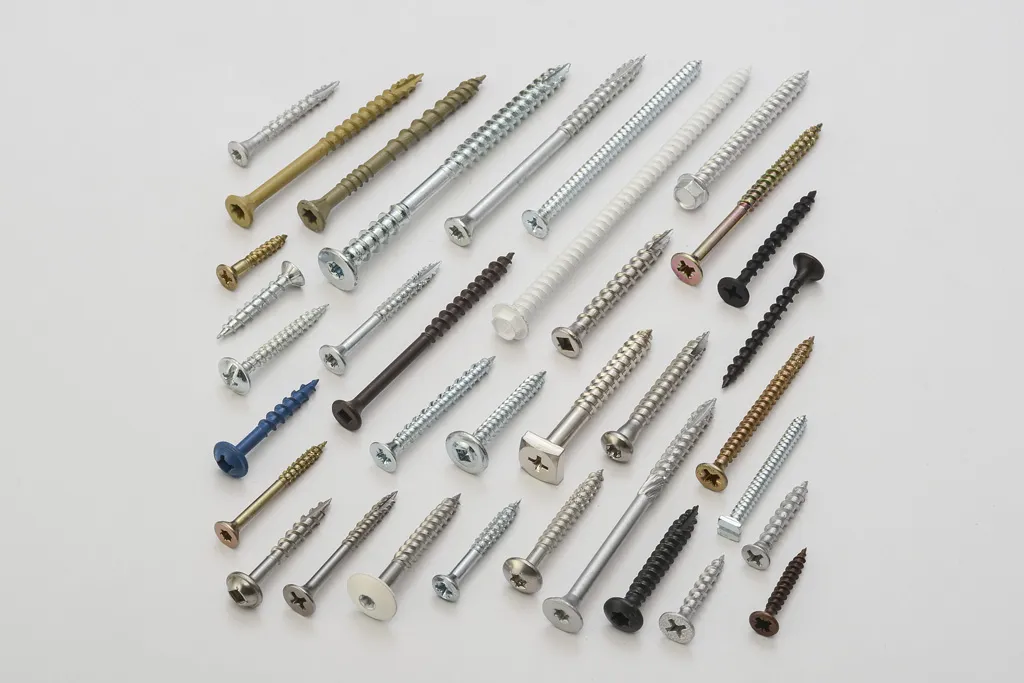Innovative, versatile line of screws for fixing wood & timber structures
JC Grand produces many custom hardened wood and timber screws (falling under the general term “chipboard”) and drywall screws for fixing gypsum to timber and metal base structures.
Chipboard and Deck screws are general purpose, hardened construction screws, with a coarse thread and fine shank to provide maximum grip and minimum stripout into chipboard, and other hard and soft timber. They can be used for both indoor and outdoor conditions depending on the type of surface treatment used on top of the steel substrate.
Drywall screws are used for a very specific purpose: fixing drywall and other gypsum products to wood and metal structures.
Drywall is a type of building material made from gypsum and other minerals pressed between sheets of heavy paper. It is installed on walls and ceilings using a type of fastener known as a drywall screw. This fastener can be used to secure the drywall to either wood or metal framing members, and is designed to minimize dimpling on the face of the walls. Traditional nails tend to leave small holes in or divots in the drywall, and can even come loose over time. Drywall screws are threaded to grip both the drywall and the framing members tightly, and provide a much more secure and long-lasting installation over time.
In a typical installation, a drywall screw is placed into each sheet every 16 inches (40.6 cm) on center. This 16-inch increment represents the center of each framing member, or stud. After all the screws have been installed, the walls are finished using joint compound. The joint compound is spread over both the screw holes and the joints between each sheet. Once the compound dries, the walls can be sanded smooth and painted.
The primary benefit offered by drywall screws is their countersunk heads. This means that the entire screw lies flush with the surface of the sheet, creating a smooth and even finish. The countersunk head also helps prevent the drywall screw from breaking the paper surface, a common problem with nails.
There are two basic types of drywall screw for installers to choose from. Type “W” units, or wood screws, have wide, coarse threads. They are used for wood framed buildings, where their coarse threading helps them to securely grip the wood. Type “S” screws are designed for use with steel framing members. They have a sharp, notched head that can easily penetrate the steel framing, as well as fine threads that are designed to pass through the steel.
Drywall screws are a type of self-tapping fastener, which means that there is no need to pre-drill holes. These screws almost always have a Phillips head rather than a slotted head, which provides additional control for installers. Instead of a standard drill, installers use a tool known as a drywall dimpler, which has an adjustable nose to install a drywall screw without tearing the paper on each sheet.
A standard drywall screw can be readily identified by its black finish. This black coloring comes from a phosphate mineral coating that is applied to these screws. This coating helps to minimize rusting and corrosion as the screws are exposed to wet joint compound or paint.

